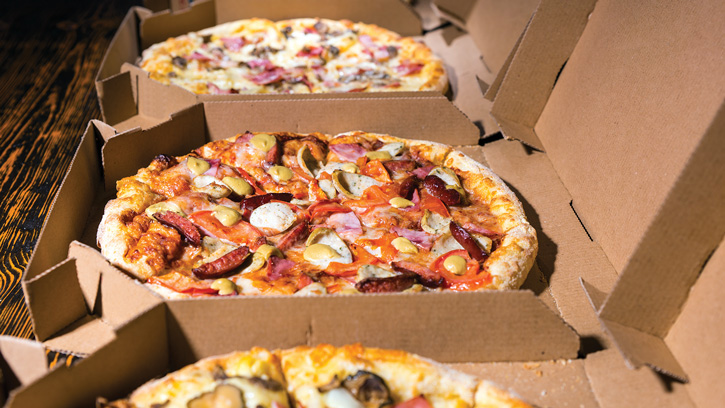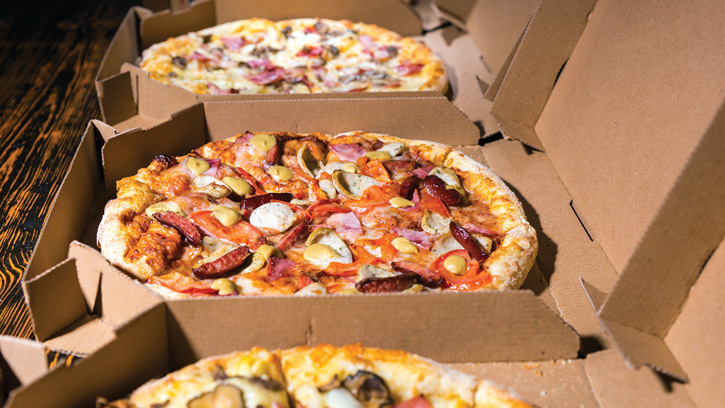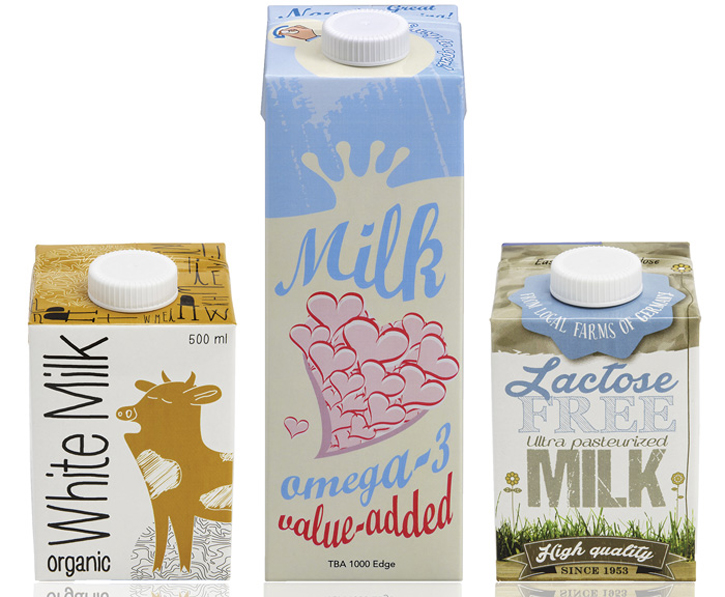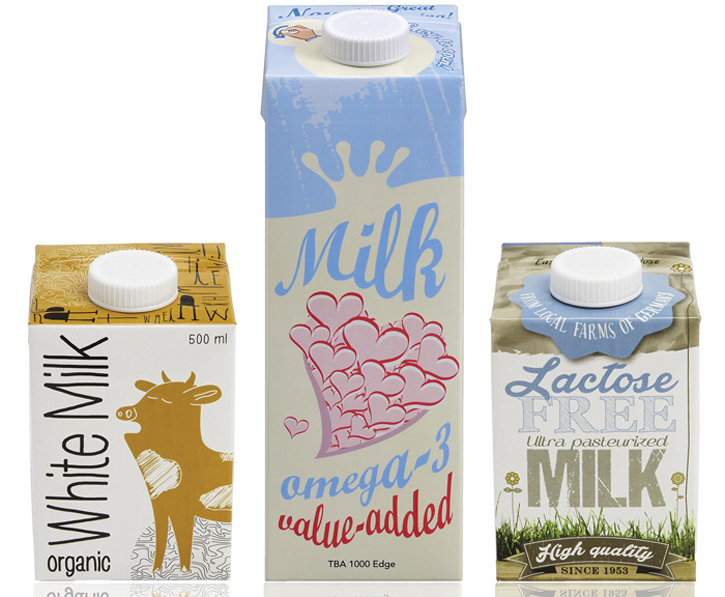Packaging That Meets Shelf-Life Goals
PACKAGING
Packaging extends shelf life to meet the demands of the global food industry. The challenge of optimizing a package to help a food achieve a required shelf life is motivated by the need to use packaging wisely and to ensure that food is safe and meets quality standards throughout its shelf life. Predicting what food package is necessary to reach a desired shelf life is challenging but useful for assessing package options.
Packaging Defines Shelf Life
The endpoint of a food’s shelf life is defined by the end of its quality and/or the onset of a food safety issue. Lipid oxidation, moisture loss or gain, browning (enzymatic and nonenzymatic), and microbial growth are the deteriorative forces that define food shelf life. Changes in flavor and nutrient content also determine the end of shelf life. These deteriorative reactions define requirements for processing and packaging and conditions for distribution, retail use, and consumer use. Packaging can alter product shelf life considerably and is sometimes dictated by food processing.
For example, peas, shrimp, and milk can be packaged using similar or different materials and formats such as cans, trays, bags, cartons, and bottles. Food and storage conditions impact the functionality of a package. Thermally processed canned peas have a “Best If Used By” date of approximately three years; they may lose quality because of changes in texture and color but are safe to eat beyond three years. Foods that are high in sulfur, such as peas, require a specific coating on the inside of a can and a specific coating on the inside of steel-based caps of glass jars. However, cooked peas sealed within foodservice trays are not safe to consume beyond three to five days. Fresh peas packaged in a microperforated pouch such as ULTRAPERF Technologies’ VegeSteam have a shelf life of 10–15 days and can be steamed in the bag using a microwave. An increase in storage temperature induces an increase in the oxygen, carbon dioxide, and water vapor permeability, depending on the structure of plastic sealed trays and pouches.
The shelf life of shrimp is also determined by different packaging. When packaged within a permeable tray, chilled irradiated shrimp has a shelf life of 15–23 days. Louisiana Direct Seafood distributes individually quick-frozen shrimp in low-permeability bags, which extends the shelf life of shrimp to about six months. In all types of packaging for shrimp, the package must maintain permeable and impermeable states at the defined temperature for food safety.
Similarly, ultra-high temperature (UHT) processed milk within sterilized paper-aluminum-polyethylene TetraPak cartons has a shelf life of 90 days at room temperature. The shelf life benefits of UHT processing would not be possible without the high barrier structure of the aseptic cartons. And refrigerated pasteurized milk packaged in high-density polyethylene (HDPE) jugs achieves a shelf life of 10–14 days.
Achieving the Right Shelf Life
Determining the shelf life of a food product and the package required to reach that shelf life is multifaceted. An appropriate shelf life ensures that quality food is available for consumers, fosters a distribution network to grow product sales volume, and enables production efficiencies associated with larger product volumes. To protect food, the right packaging materials are necessary. For example, additional grease-resistant insulating corrugated packaging is needed for take-out pizza; only plates are needed when pizza is consumed in a restaurant. When optimized, packaging for deliveries and takeout can use less materials while extending the shelf life of food. For example, closed-loop foodservice delivery operations for 10-minute fast- food and Hema market deliveries in China employ extensive reusable packaging so that municipal collection and sorting systems do not need to handle additional packaging. Instead, the outer insulating delivery packaging is reused, and the consumer receives minimal packaging.
Similarly, snack-size chips replenished by brand-managed direct-store-delivery are packaged in metallized-polymer inflated pouches to retain the nitrogen atmosphere within the packaging. If conventional warehouses were used, better barriers for oxygen and nitrogen, more sophisticated active packaging, or a value chain adjustment would be required. In areas with low populations, food selection is often limited, and foods with extended shelf life are needed to ensure they maintain quality and safety until consumers purchase them. Many products consumers need would not be available beyond a local environment without packaging that extends shelf life. For example, preservative-free, gluten-free baked goods have a water activity above 0.65, so they require packaging that maintains an internal environment of less than approximately 2% oxygen to hinder mold growth; in addition, the inner packaging environment is modified with carbon dioxide, nitrogen, and an oxygen absorber.
Many food companies are located near the source of key ingredients while consumers live in other locations. To achieve greater sales, distribution channels need to expand beyond the local area. For example, the packaging for Kerrygold butter is designed to stall lipid oxidation; this allows Ornua Co-operative to expand distribution to reach $1 billion in sales annually. The degree of oxidation as a function of package transparency is assessed by exposing packaged butter to different light sources and measuring the oxidation and L*a*b color values on the surface of the butter. The inside of the wrapping of Kerrygold butter sticks provides a superior oxygen barrier and the light-resistant, foil-coated, solid bleached sulfate outer carton inhibits light-induced lipid oxidation that can increase under the lighting of retail dairy cases. Similarly, making opaque bottles thinner to reduce the amount of packaging allows more light to transmit through the bottles; this impacts product shelf life. Brazilian beef that will be exported to other countries must be contained in a low-oxygen environment maintained with high barrier packaging to maintain its shelf life.
Production efficiency is yet another reason that packaging is used to prolong shelf life. Packaging of seasonal foods often requires that the food be shipped worldwide to areas with alternate growing seasons. The type of packaging is dictated by the need to package food rapidly. For example, at the end of the growing seasons, Nigerian mangoes can be packaged in high-moisture barrier packaging after they are dried, canned, packed in molded trays as fresh produce, diced for use as ingredients, or pressed into juice. In North Dakota and Minnesota, sugar beets are harvested in 2–4 weeks and processed into sugar; the sugar is then packaged in layered paper bags that accommodate rapid filling.
Predicting the Right Package
Numerous models exist to predict what package is required to achieve a desired shelf life. However, the models only serve as a guide to define the range of acceptable barrier properties while their algorithms highlight concerns. Because oxygen, water, and carbon dioxide affect shelf life, permeabilities need to be assessed for the environment to which the food will be exposed; this often does not align with standard information. For example, standard data parameters for oxygen transmission rate (OTR) is 0%–100% at low humidity and high temperature. However, gradients for packaged food usually range from 0% to 21% of oxygen at relative humidities of 20% to 90% and at temperatures of -5°F to 110°F. Predictive OTR values for different oxygen, humidity, and temperature conditions are inherently flawed for polymer and paperboard structures that alter significantly as a function of different parameters. Likewise, predictions of water vapor transmission based on different gradients at different temperatures are problematic.
With full knowledge of the mode of deterioration, a product’s propensity to deteriorate, and the functionality of the package at temperature and time of use, shelf life can be predicted at standard conditions. The rate of deteriorative reactions is often a function of the properties of a package. For example, if oxygen is the limiting factor, then the rate of lipid oxidation is a function of the initial oxygen concentration within the package as well as the rate of oxygen permeating into the package. However, as the oxygen is consumed and the product oxidizes, the number of moles of oxygen within the package declines and measuring oxidation at a constant oxygen concentration results in a more accurate prediction of the required initial oxygen level and oxygen transmission rate. The amount of unsaturated fats can also be used to determine package requirements. For example, soy nuts with 9% monounsaturated fat and 15% polyunsaturated fat require less protection from oxygen than pecans with 40% monounsaturated fat and 22% polyunsaturated fat. Likewise, the amount of sugar in a product can dictate the barrier strength to prevent water vapor. A product with more sugar than another product requires a better barrier to water vapor to achieve the same shelf life.
The rate of respiration of produce is used to predict the optimal initial level and permeability of oxygen and carbon dioxide at different storage temperatures. However, predicting the shelf life of packaged produce is more complex than permeability and initial concentrations of oxygen, water, carbon dioxide, and ethylene. When antimicrobial packaging or packaging that releases phages is employed, the efficacy of antimicrobial properties and thus the shelf life are a function of storage temperature and relative humidity.
Accelerated shelf-life testing is useful to determine the shelf life of products and is correlated to standard conditions. However, full knowledge of the deteriorative reaction rates and package properties as a function of temperature are required for the correlation between standard and accelerated shelf-life conditions. For example, when assessing the quality difference of granola bars packaged in coated paper versus polypropylene, accelerating the shelf life via increasing temperature alters the paper less than the polypropylene whereas accelerating the shelf life via increasing relative humidity alters the paper more than the polypropylene.






